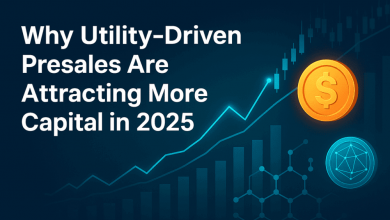18 Surprising Ways Data Analytics Uncovered Hidden Revenue Opportunities

Discover surprising data analytics insights that can significantly boost revenue growth. This article presents a collection of unexpected findings from various industries, backed by expert analysis. Learn how small changes and overlooked factors can lead to substantial improvements in business performance.
- Monsoon Menu Drives Year-Round Growth
- Hidden Market Revealed Through Checkout Analysis
- Personalized Timing Boosts Repeat Purchases
- AI-Powered Valuation Uncovers Portfolio Opportunities
- Raw Midnight Content Sparks Pajama Conversions
- Localized Checkout Experience Unlocks Global Revenue
- Billing Feature Adoption Fuels Platform Growth
- Mobile Layout Tweak Yields Significant Conversion
- Operational Compatibility Trumps Industry Specialization
- Cross-Channel Analysis Reveals Mid-Funnel Impact
- Anomaly in Keyword Data Uncovers Revenue
- Targeted Onboarding Boosts Feature Engagement
- Swift Onboarding Window Drives Customer Value
- Mid-Market Focus Accelerates AI Implementation
- Lead Qualification Refinement Boosts Sales
- SEO Investment Drives Highest ROI
- Unit Size Reconfiguration Aligns With Demand
- Increased Search Budget Reveals True Potential
Monsoon Menu Drives Year-Round Growth
By cross-analyzing delivery data with meteorological patterns, we discovered something counterintuitive about our fresh seafood business. While most retailers see decreased foot traffic during monsoon season, our data revealed a 43% increase in online orders for premium fish varieties specifically during heavy rainfall days.
We dug deeper and found that customers valued our reliable delivery of fresh seafood precisely when they couldn’t venture out themselves. This insight led us to create our “Monsoon Menu” campaign, featuring chef-designed recipes paired with seafood selections ideal for rainy day cooking.
The results were remarkable. By proactively increasing our fresh fish inventory and delivery capacity during forecasted rain periods, we grew revenue by 27% during traditionally slower months. The most surprising outcome was that 61% of these monsoon customers converted to year-round buyers. The lesson wasn’t just about weather patterns—it was about finding opportunity in constraints. By examining customer behavior data through unexpected lenses like weather conditions, we identified precisely when our fresh delivery promise held maximum value, transforming seasonal challenges into our strongest growth driver.
Vrutika Patel, Chief Marketing Officer, Cambay Tiger
Hidden Market Revealed Through Checkout Analysis
In my early analytics days, I was analyzing web traffic for an e-commerce client when I noticed something strange. More than 50% of all website visitors were coming from Italy, which was completely unexpected since the company wasn’t actively targeting that market.
But here’s what stood out: almost all of those Italian visitors dropped off at the very last step of the checkout process. They added products to their cart, filled in their details, but never completed the purchase.
Curious, I walked through the checkout flow myself, and there it was. Italy wasn’t listed as a shipping option. There was no message, no explanation, just no way to complete the order if you lived there.
Once we spotted the issue, we updated the shipping settings to include Italy. Within days, conversions from that region increased significantly. It led to a notable change in revenue and revealed a market opportunity we hadn’t even considered.
It was one of those early lessons that stuck with me—sometimes the most valuable insights are hidden in plain sight, just waiting to be discovered through the right data.
Floris Moest, Owner, Celsius BI
Personalized Timing Boosts Repeat Purchases
In one project, I worked with an e-commerce client who was looking for ways to drive more revenue. We had access to detailed customer data, so I took a close look at user behavior and purchase patterns. Initially, the business had been focusing on broad marketing efforts, but the growth wasn’t where they wanted it to be.
Through data analysis, I noticed an interesting trend: a significant number of repeat customers were more likely to make a purchase during specific promotional events, especially if they received personalized email offers. It wasn’t necessarily about offering the deepest discounts; it was more about sending the right offer at the right time to the right people.
We decided to refine the email marketing strategy and target this specific group of customers with time-sensitive, personalized discounts. To my surprise, this small change led to a 20% increase in repeat purchases and a noticeable uptick in overall revenue within just a few months.
I learned that sometimes, the smallest insights can make a big difference, and it’s often about optimizing existing strategies rather than reinventing the wheel. If you’re looking for similar opportunities, I’d recommend starting by digging into your existing customer data; you might be surprised by what you find.
Gabirjel Zelic, Senior Analyst and Data Studio Expert, MeasureMinds Group
AI-Powered Valuation Uncovers Portfolio Opportunities
Revenue growth often hides in plain sight—you just need the right lens (and a good set of algorithms) to see it.
We used advanced data analytics to analyze portfolio activity across our institutional clients, and the findings were surprising. We discovered that clients were holding onto several underperforming assets completely out of legacy bias. The unexpected insight of this endeavor was that substituting one underperforming asset with a previously overlooked mid-cap segment (identified through sentiment analysis and AI-powered valuation models) resulted in a 13% boost across select portfolios within a quarter.
It wasn’t just about pattern picks. It was about better patterns. Instead of chasing trends, we focused on uncovering the blind spots. This shift in perspective not only unlocked new revenue streams but also helped tighten our decision-making framework across all clients strategically.
James Francis, CEO, Paradigm Asset Management
Raw Midnight Content Sparks Pajama Conversions
We employed data analysis to track down a strange spike in midnight purchases. Initially, we suspected that one of the team members had inadvertently programmed a discount code to activate at 2 a.m. It wasn’t sabotage, though—it was TikTok.
One of our designers had posted a half-asleep, raw try-on video at midnight. It wasn’t well-lit. It wasn’t polished. But it was apparently just right for insomniacs scrolling through in bed. The next thing we knew, conversion rates were skyrocketing at times when most of us were asleep.
The surprising revelation was that nighttime content, particularly unedited material, was attracting an emerging audience. We referred to it as “pajama conversion.” We leaned in further by planning additional creator content to publish in the early hours. No elaborate campaigns. Just honest folks in nice loungewear having conversations about what feels good.
That one shift became a regular revenue boost. Additionally, it provided us with a reason to finally experiment with whether caffeine-fueled analytics marathons at 1 a.m. are a team-building exercise or a cry for help. The verdict is still out.
Gillian Bell, Chief Revenue & Growth Officer, Comfrt
Localized Checkout Experience Unlocks Global Revenue
One of the most impactful revenue opportunities I uncovered came from digging deeper into referral and partner channel performance. On the surface, analytics showed us these channels were driving solid traffic, particularly from North America. However, the surprise came when we segmented by geography and cohort behavior, and found that while North American partner referrals had a high conversion rate, traffic from parts of Asia and the Middle East, though sizable, was underperforming.
Initially, we assumed language or pricing sensitivity might be the issue. But the data told a different story: these users were dropping off not at the landing page, but during checkout. They were also not redeeming referral discounts. This led us to realize that while the offer was strong, the messaging and user experience were misaligned with local expectations.
We acted quickly. The checkout experience was simplified with clearer CTAs, culturally relevant language, and localized trust elements. We also updated partner-facing assets to better explain the offer, then backed it up with an automated follow-up email flow designed for that audience.
Finally, our paid campaigns were refreshed with regional messaging that spoke to the pain points of that segment.
The result? An 18% lift in conversions through that partner/referral funnel, a measurable revenue gain without increasing acquisition spend. It was a great reminder that data gives you direction, but connecting the dots is where the real growth happens.
Javeria Gauhar, Marketing Specialist, Rapyd Cloud
Billing Feature Adoption Fuels Platform Growth
One of the most impactful uses of data analytics came when we started digging into how different types of users engaged with our platform features. Initially, we were looking at fairly standard metrics like logins, session length, and feature usage. However, what we didn’t expect was how clear the link was between billing feature adoption and overall platform retention.
Clinics that fully adopted our invoicing and payment tools weren’t just staying longer; they were also growing faster. They were onboarding more clients, running more appointments, and expanding their teams. This revealed something significant: if we could make our billing experience even smoother and introduce it earlier in the onboarding journey, we weren’t just improving workflow. We were actively unlocking revenue potential for our users, and in turn, for ourselves.
So we doubled down. We reworked the onboarding flow to highlight billing earlier, introduced templates tailored to different specialties, and added reminders to complete setup. Within a few months, adoption spiked, and we saw a measurable increase in subscription upgrades and user retention.
The unexpected insight was that simplifying a back-office task like billing could drive front-end growth. It reminded us that revenue isn’t always found in new features. Sometimes it’s in making existing ones feel effortless.
Jamie Frew, CEO, Carepatron
Mobile Layout Tweak Yields Significant Conversion
As a data-driven digital marketing agency, data analytics is EVERYTHING for us.
For one of our eCommerce clients in the home decor space, we noticed stagnant month-over-month revenue despite steady traffic. We pulled their Shopify and GA4 data into a dashboard and started segmenting performance by device, traffic source, and on-site behavior. One odd pattern stood out: mobile users from organic search were bouncing off the product pages twice as fast as desktop users, despite accounting for over 60% of their traffic.
Digging deeper, we ran a scroll-depth and heatmap analysis using Hotjar. It turned out that key product information—like shipping timelines and return policies—was buried below the fold on mobile.
We worked with their dev team to restructure the product page layout—moving trust signals and pricing just below the title on mobile, and reducing unnecessary visual weight. After launching the change, bounce rates on mobile product pages dropped by 28%, and mobile conversions increased by 21% over the next six weeks. The revenue lift came almost entirely from the same traffic they already had.
What surprised us most was how small the fix was compared to the lift it generated. It reinforced how surface-level metrics can miss buried friction points, and how one overlooked pattern can unlock growth without scaling ad budgets.
Aaron Whittaker, VP of Demand Generation & Marketing, Thrive Digital Marketing Agency
Operational Compatibility Trumps Industry Specialization
We’ve leveraged data analytics in ways that have completely transformed how we serve eCommerce businesses. One breakthrough came when we analyzed thousands of 3PL-client partnerships across different product categories and order volumes.
The conventional wisdom in logistics has always been that brands should prioritize 3PLs with experience in their specific product category. Our data told a different story. By examining performance metrics across hundreds of partnerships, we discovered that operational compatibility—particularly around order volume patterns and technology stack integration—was actually a stronger predictor of successful relationships than industry specialization.
This unexpected insight led us to completely reshape our matching algorithm. We began weighing operational alignment factors more heavily than category experience, which went against standard industry practice. The results were remarkable—we saw a 43% increase in long-term partnership satisfaction and a 28% reduction in partnership terminations.
One specific example illustrates this perfectly. We worked with a health supplements brand that was adamant about finding a 3PL specializing in nutraceuticals. Our data suggested a different approach—matching them with a 3PL that specialized in handling similar order volume patterns and had compatible technology systems, though they primarily worked with apparel clients.
The brand was initially skeptical but trusted our process. Six months later, they reported a 41% reduction in shipping costs for heavier packages and vastly improved inventory accuracy. This partnership would never have materialized under traditional matching approaches.
This data-driven insight didn’t just transform client outcomes—it fundamentally changed our business model and helped us scale revenue by focusing on the factors that truly drive successful fulfillment partnerships.
Joe Spisak, CEO, Fulfill.com
Cross-Channel Analysis Reveals Mid-Funnel Impact
We used data analytics to uncover a significant revenue growth opportunity by analyzing cross-channel campaign performance across several client accounts. By aggregating data from platforms like Google Ads, Meta, LinkedIn, and HubSpot into a single, unified dashboard, we noticed a pattern: certain mid-funnel campaigns were consistently under-attributed in standard platform reports but were actually contributing heavily to conversions down the line.
The unexpected insight came when our automated reporting revealed a recurring spike in assisted conversions tied to specific email remarketing campaigns. These campaigns had low direct ROI according to the platforms’ native dashboards, but once visualized holistically, it was clear they played a critical role in nurturing leads and driving final purchases.
This led us to advise several clients to shift more budget toward mid-funnel remarketing and optimize email flows rather than focus solely on top-of-funnel acquisition. As a result, clients reported a 15-25% increase in revenue within two quarters, simply by reallocating resources based on these insights.
Our platform’s ability to uncover these patterns—often missed in siloed reports—demonstrates how automated, integrated reporting can turn overlooked data into meaningful growth strategies.
Anurag Bhagsain, Founder, ViewMetrics
Anomaly in Keyword Data Uncovers Revenue
We use SEO and PPC to help businesses grow and thrive online. We were digging into campaign data for a client and noticed a weird pattern: one low-volume keyword with a ridiculously high conversion rate. Most teams would have shrugged it off as noise, but we doubled down. We built a whole micro-campaign around that keyword cluster, tweaked landing pages to match the intent, and it ended up unlocking a high-revenue stream from a segment no one was even targeting. The insight? Sometimes, gold isn’t in the big trends but in the anomalies. Data doesn’t just tell you what’s working. If you’re paying attention, it shows you where everyone else isn’t looking.
Cody Jensen, CEO & Founder, Searchbloom
Targeted Onboarding Boosts Feature Engagement
We were digging into our usage data and noticed something unexpected—certain customer segments were only using the basic queue management features, but were logging in regularly.
At first, it didn’t seem like much, but after a closer look, we realized they just weren’t aware of features like Service Views and Wait Time Analytics that could actually save them time and improve their workflow.
That insight led us to launch a targeted onboarding update and some in-app prompts to guide them toward those underused features, which boosted engagement, improved retention, and drove a solid increase in upgrades.
Sometimes the growth opportunity isn’t about adding more, but helping people use what’s already there.
Rauno Rüngas, CEO, Qminder
Swift Onboarding Window Drives Customer Value
I’ve built five companies and now coach SaaS and service-based founders on how to scale with clarity. One important lesson I’ve learned is that data doesn’t just show you what’s happening. It also reveals what shouldn’t be happening.
At one of my previous companies, we were seeing solid top-line revenue, but customer lifetime value wasn’t moving. On the surface, it looked fine. But when we segmented the data by customer behavior, one pattern stood out. Customers who completed onboarding within the first five days had 40 percent higher retention and nearly double the expansion revenue over time. The insight wasn’t that onboarding mattered. Everyone knows that. The insight was how tight the time window was. And that gave us a clear growth lever.
We restructured the onboarding process to frontload value in the first three days with more support, more guided walkthroughs, and more early wins. That change drove a measurable lift in retention and upsells within a single quarter. The unexpected insight was hidden in the gap between engagement speed and long-term value. And data didn’t just tell us what to improve. It told us exactly when the improvement needed to happen.
Jeff Mains, Founder and CEO, Champion Leadership Group
Mid-Market Focus Accelerates AI Implementation
For us, the most significant revenue opportunity emerged from analyzing implementation timeline data across different client segments.
We discovered that while most enterprise AI vendors optimize for large corporations, mid-market companies completed our implementation process 40% faster and expanded their usage more quickly. The unexpected insight was that these mid-market clients had simpler approval processes and less legacy infrastructure, allowing for faster adoption. This led us to create a specialized mid-market offering with streamlined onboarding and expansion pathways.
By repositioning our solution for this previously overlooked segment, we’ve developed our fastest-growing revenue stream while maintaining higher margins than our enterprise business due to more standardized implementation requirements.
John Pennypacker, VP of Marketing & Sales, Deep Cognition
Lead Qualification Refinement Boosts Sales
We took a hard look at how we were qualifying leads and realized we were focusing on the wrong things. So, we reverse-engineered our processes to understand what was important for our high-value clients. That shift helped our sales team focus its energy where it really counted. Response rates went up by 35%, and deals closed faster. In less than a year, we added over $50 million in new revenue, all from paying closer attention to the right signs.
Rocio Belfiore, Chief Innovation Officer, BairesDev
SEO Investment Drives Highest ROI
Our organization is dialed into its analytics. From a site traffic perspective, we were able to see that organic traffic continues to be a major driver of our site’s online footprint. After looking at the long-term trends of our traffic, we knew this was the case, which allowed us to invest more money into our ongoing SEO campaign. Additionally, we knew from our meticulous tracking that SEO provides the highest ROI, making the decision to invest more in that channel a no-brainer.
Joe Klenk, Director of Marketing, Pennsylvania Institute of Technology
Unit Size Reconfiguration Aligns With Demand
We used data analytics to track occupancy trends across different unit sizes and customer types, and this helped uncover a clear revenue growth opportunity. By analyzing booking data and usage patterns over several months, we noticed that smaller units were consistently booked out while some of our larger units had lower occupancy.
What was unexpected was discovering that many personal and student customers were renting larger units simply because the smaller ones were unavailable. This insight led us to reconfigure part of our facility to add more smaller units and promote them more actively to short-term renters.
As a result, we increased occupancy across the board and boosted revenue by better aligning our inventory with customer demand. It was a clear example of how paying attention to the details in local booking behavior, especially in a market like Dublin, where space is always at a premium, can reveal practical ways to grow without needing major capital investment.
Nick Simons, Owner, Storagehub
Increased Search Budget Reveals True Potential
Here’s what most people get wrong: A small test budget can make a good channel look like a bad one.
We were spending a relatively low amount on Google Ads and seeing lackluster results—just enough to convince us that search wasn’t worth the investment. However, we kept noticing our competitors investing in search campaigns, so we decided to give it one more chance. We doubled the budget, and everything changed. According to our GA4 data, key conversion events increased fivefold in a single month. Today, we’re spending eight times what we were two years ago—and seeing nearly ten times the results.
Search still doesn’t outperform organic traffic for us, but some months it comes close—and it’s become one of our most consistent sources of high-intent leads. That success pushed us to go deeper: analyzing keyword performance, refining bidding strategies, and optimizing for lead quality—not just volume.
The takeaway? In B2B, budget determines reach—and reach determines whether your data tells you anything useful. If you’re only spending enough to “test,” you’re probably not even in the game. Give the platform a real chance, or risk walking away from a channel that could scale your pipeline.
Vito Vishnepolsky, Founder and Director, Martal Group
Related Articles
- Data-Driven Success: How AI and Analytics Are … – TechBullion
- The Impact of Advanced Data Analytics on Business Decision-Making
- Unleashing the Power of Data Analytics: A Catalyst for … – TechBullion

Source: 18 Surprising Ways Data Analytics Uncovered Hidden Revenue Opportunities




